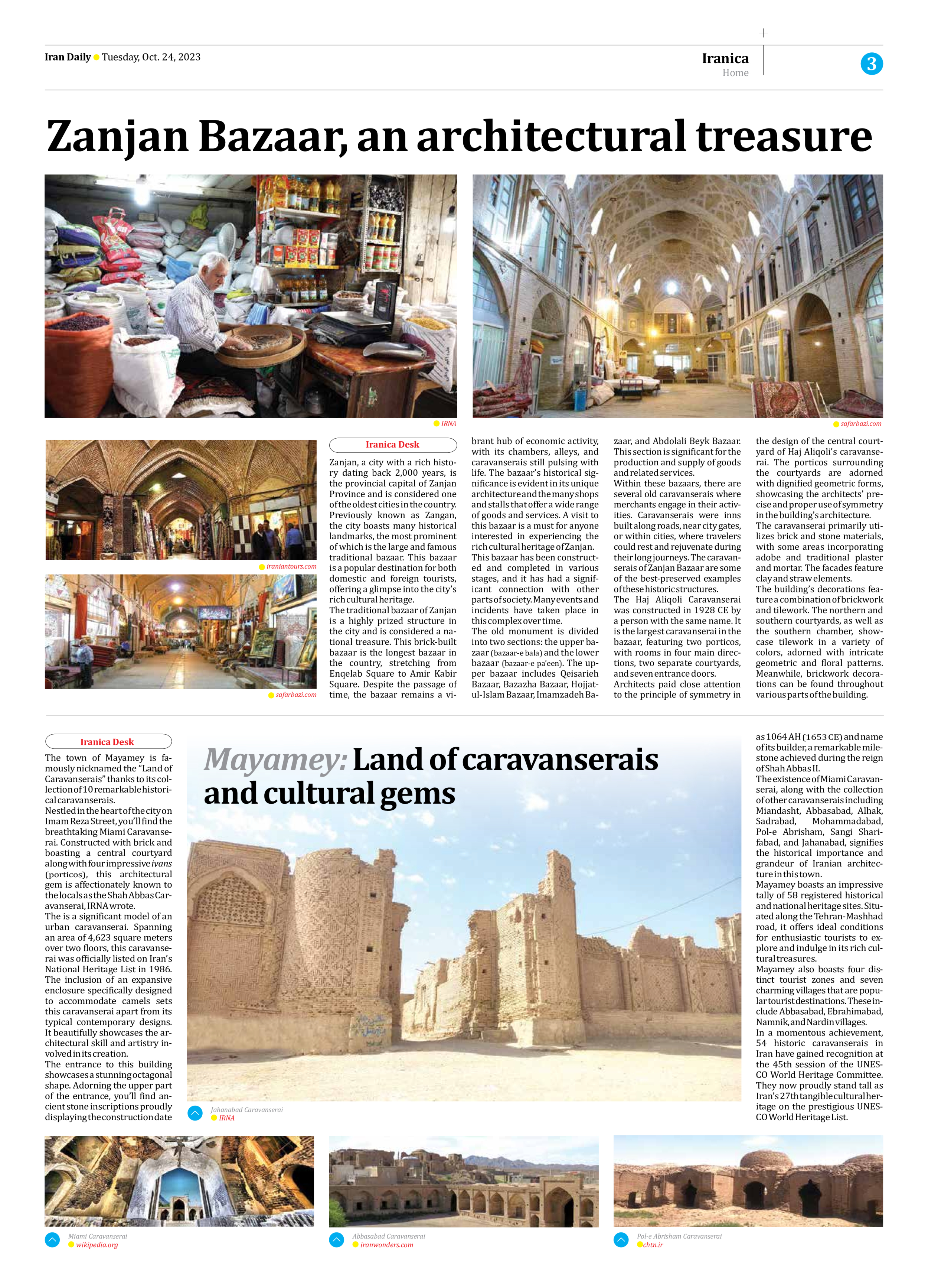
Mayamey: Land of caravanserais and cultural gems
The town of Mayamey is famously nicknamed the “Land of Caravanserais” thanks to its collection of 10 remarkable historical caravanserais.
Nestled in the heart of the city on Imam Reza Street, you’ll find the breathtaking Miami Caravanserai. Constructed with brick and boasting a central courtyard along with four impressive ivans (porticos), this architectural gem is affectionately known to the locals as the Shah Abbas Caravanserai, IRNA wrote.
The is a significant model of an urban caravanserai. Spanning an area of 4,623 square meters over two floors, this caravanserai was officially listed on Iran’s National Heritage List in 1986. The inclusion of an expansive enclosure specifically designed to accommodate camels sets this caravanserai apart from its typical contemporary designs. It beautifully showcases the architectural skill and artistry involved in its creation.
The entrance to this building showcases a stunning octagonal shape. Adorning the upper part of the entrance, you’ll find ancient stone inscriptions proudly displaying the construction date as 1064 AH (1653 CE) and name of its builder, a remarkable milestone achieved during the reign of Shah Abbas II.
The existence of Miami Caravanserai, along with the collection of other caravanserais including Miandasht, Abbasabad, Alhak, Sadrabad, Mohammadabad, Pol-e Abrisham, Sangi Sharifabad, and Jahanabad, signifies the historical importance and grandeur of Iranian architecture in this town.
Mayamey boasts an impressive tally of 58 registered historical and national heritage sites. Situated along the Tehran-Mashhad road, it offers ideal conditions for enthusiastic tourists to explore and indulge in its rich cultural treasures.
Mayamey also boasts four distinct tourist zones and seven charming villages that are popular tourist destinations. These include Abbasabad, Ebrahimabad, Namnik, and Nardin villages.
In a momentous achievement, 54 historic caravanserais in Iran have gained recognition at the 45th session of the UNESCO World Heritage Committee. They now proudly stand tall as Iran’s 27th tangible cultural heritage on the prestigious UNESCO World Heritage List.







